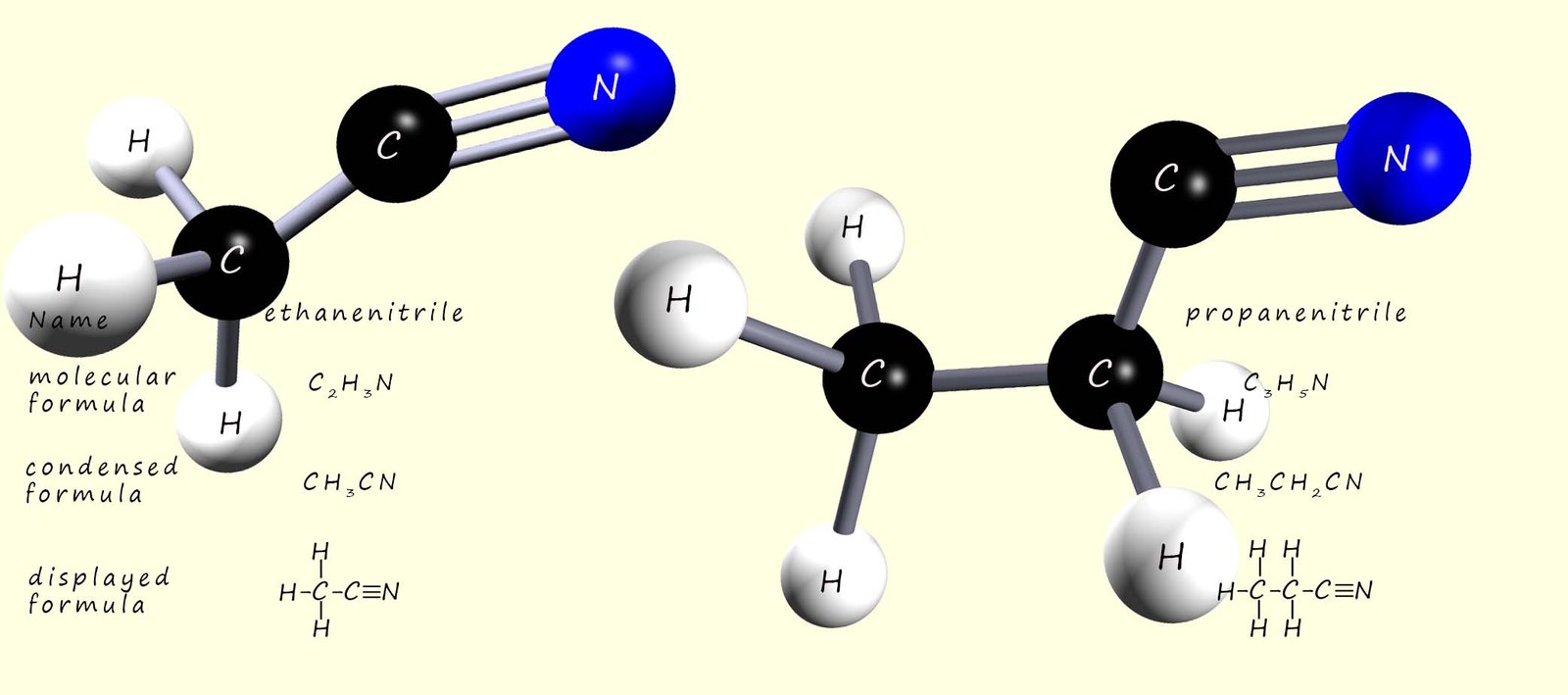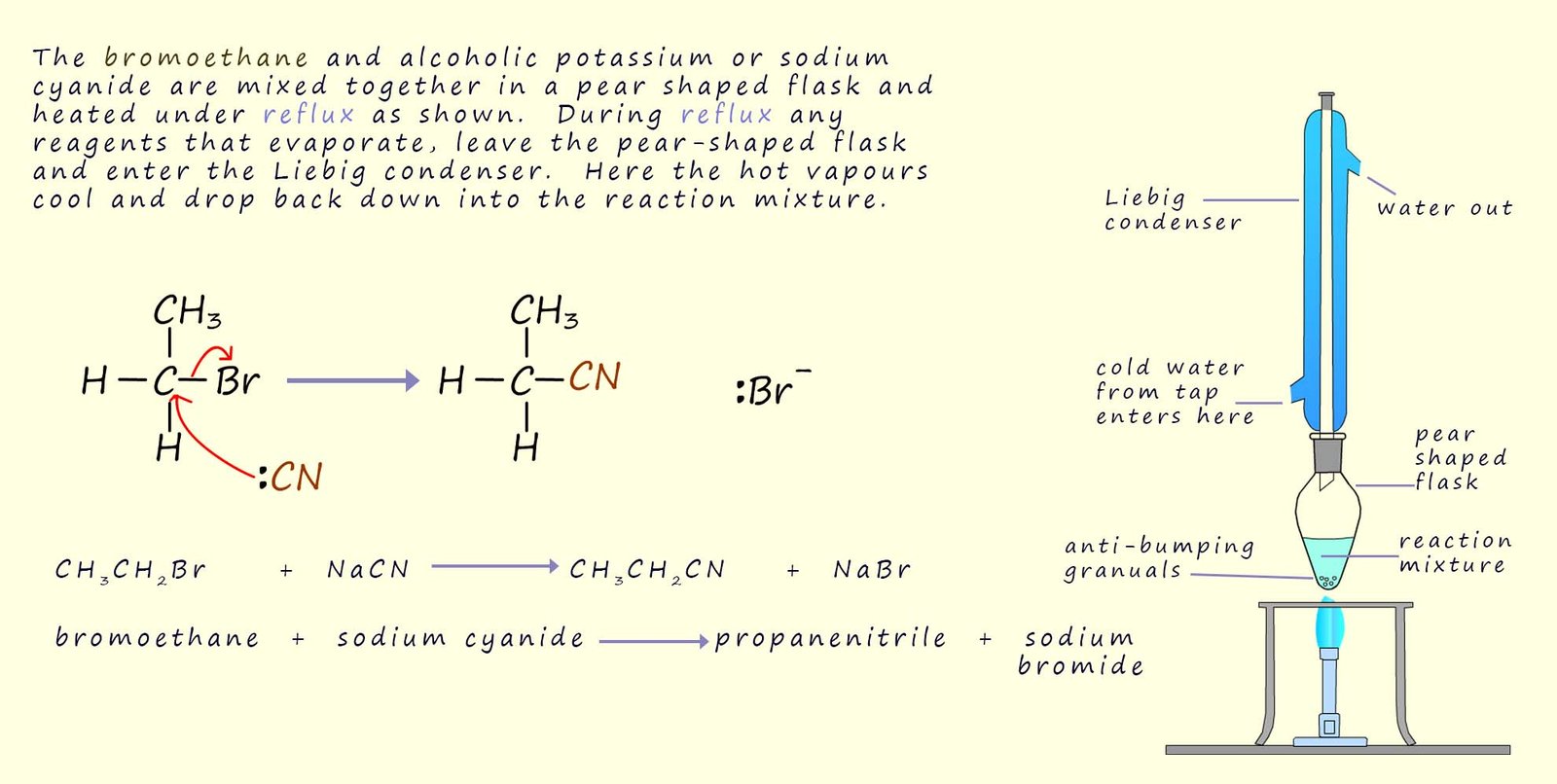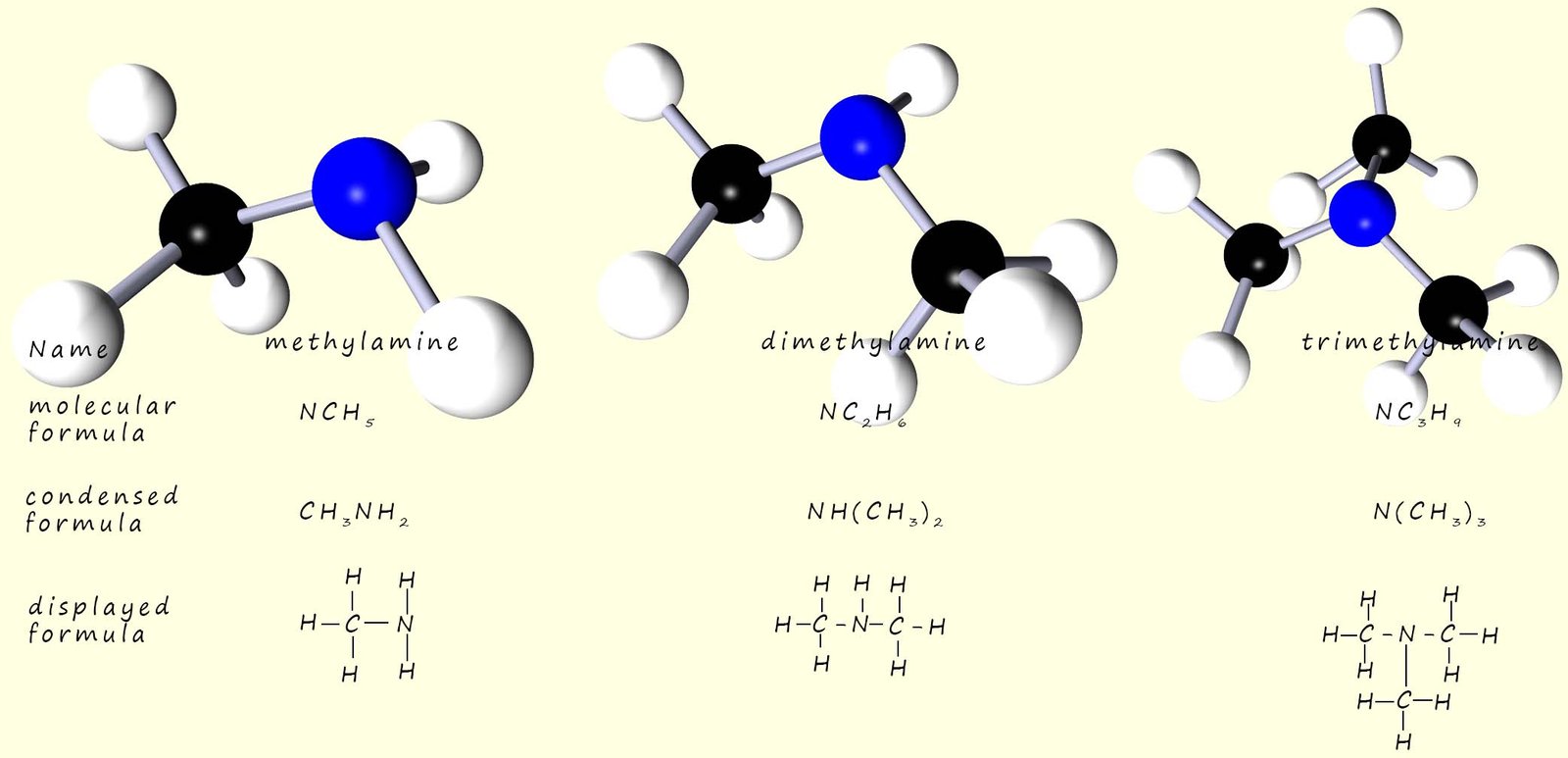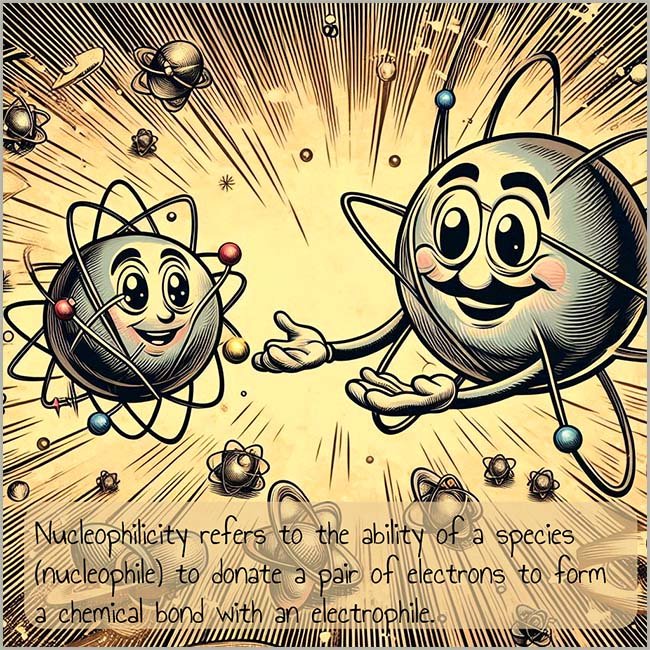
This page covers common nucleophilic substitution reactions of halogenalkanes using hydroxide ions (OH-), cyanide ions (CN-) and the neutral molecule ammonia (NH3) . If you are not familiar with the mechanism of nucleophilic substitution reactions I would suggest you review this before studying the page below.
Alcohols are formed when halogenalkanes
are warmed with an aqueous solution of sodium hydroxide or potassium hydroxide.
You are probably
familiar with potassium and sodium hydroxide from any work you have done on acids and alkalis where sodium hydroxide and potassium hydroxide would have been used as a base
(a H+ acceptor). However the hydroxide ion (OH-) can also behave as a
nucleophile. There are
many similarities between nucleophiles and bases;
for example they both possess lone pairs of electrons. Usually
strong bases are also good nucleophiles
and vice versa. However with sodium and potassium hydroxide we can adjust the reaction
conditions to "make it" behave as a base or a
nucleophile.
In the reaction below sodium hydroxide is reacting with the halogenalkane bromoethane. In an aqueous solution of sodium hydroxide, here the hydroxide ion (OH-) behaves as a nucleophile; indeed this is a typical nucleophilic substitution reaction where the hydroxide ion uses one of its lone pairs of electrons to attack the partially charged carbon atom in the polar C-Br bond. The product of this reaction is the alcohol ethanol and the salt sodium bromide which of course will be in solution.

The main problem with the set-up above is that halogenalkanes are pretty much insoluble in water so the reaction is going to be very slow. You could add the alcohol ethanol to the sodium hydroxide to produce what is often called ethanolic sodium hydroxide solution. The halogenalkane would be soluble in this mixture but unfortunately this may lead to a different type of reaction called an elimination reaction; this elimination we would not produce the alcohol but instead lead to the formation of unsaturated alkenes. A better solution to this problem would be to set-up a reflux reaction using the halogenalkane and the aqueous sodium hydroxide, this would allow sufficient time for the reaction to take place and also help force it forwards to produce the product. A reflux set-up is shown below in the nitrile section of this page.
Nitriles contain the functional group R-CN. Nitriles are particularly useful in organic synthesis are they are one of the few ways in which it is possible to extend the carbon chain by one carbon atom. Nitriles are also reactive and are easily converted into other useful and reactive molecules such as amines, amides and carboxylic acids. The first two members of the nitriles homologous series are shown below:
 Nitriles can be made by reacting a halogenalkane
with an warm alcoholic solution
of potassium or sodium cyanide, this nucleophilic substitution reaction (SN2) is carried out under
reflux conditions as shown in the image below, for example the primary halogenalkane bromoethane
reacts with the cyanide ion (:CN-) to form propanenitrile. The cyanide ion uses its
lone pair of electrons
to attack the δ+ carbon atom in the C-Br bond. The mechanism for this reaction is shown below:
Nitriles can be made by reacting a halogenalkane
with an warm alcoholic solution
of potassium or sodium cyanide, this nucleophilic substitution reaction (SN2) is carried out under
reflux conditions as shown in the image below, for example the primary halogenalkane bromoethane
reacts with the cyanide ion (:CN-) to form propanenitrile. The cyanide ion uses its
lone pair of electrons
to attack the δ+ carbon atom in the C-Br bond. The mechanism for this reaction is shown below:

Ammonia reacts with halogenalkanes to produce amines. Amines are simply molecules of ammonia (NH3) where one or more of the hydrogen atoms on the ammonia molecule is replaced by an alkyl group, for example:

Before we look at the mechanism of the reaction between ammonia and halogenalkane molecules consider the two reactions of ammonia shown below, how these two reactions similar and how are they different? As was mentioned above molecules with lone pairs of electrons can act as either nucleophiles or bases.


Whether the substance in question acts as a nucleophile or a base will largely depend on the reaction conditions used, that is for example the temperature or the particular solvent used to carry out the reaction in question. In summary we can say that in most cases good bases are also good nucleophiles and that there are several factors affecting nucleophilicity; including:
The reaction of ammonia with
halogenalkanes needs to be carried out in a sealed reaction vessel otherwise the ammonia gas will simply escape. Ammonia
is a gas at room temperature and it is very soluble in water however when heated ammonia gas would be given off, so this
reaction needs to be carried out in sealed vessels.
The mechanism for the nucleophilic substitution reaction of bromomethane and ammonia is shown below; you should note that
2 moles of ammonia are used for every mole
of the halogenalkane. One mole of the
ammonia acts as a nucleophile and attacks the δ+ carbon atom in the
halogenalkane while the other mole of
ammonia
acts as a base and abstracts a proton (H+) from the quaternary
ammonium salt. The final product in
this case is methylamine.

Explanation of mechanism:
However this is not the end of the story for this reaction. If you follow the mechanism you can clearly see that
the ammonia simply swaps a hydrogen atom for a methyl group or
if a different halogenalkane was used, for example bromoethane,
then an ethyl group would replace a hydrogen atom on the ammonia
to form ethylamine.
The problem is the product of the reaction; the primary amine
is a stronger base and a better nucleophile
than
ammonia. So as the reaction proceeds its concentration will
increase and it will take over from ammonia in the reaction
mechanism. This will
mean that one of the hydrogen atoms on the primary amine will be replaced
by an alkyl group to form a secondary amine,
this is outlined below:

I am sure you can see where this going! The product of the reaction above, the
dimethylamine is a better nucleophile
than the primary amine; methylamine. This means that as the
concentration of the secondary amine; dimethylamine increases
it will take over from the methylamine and form the tertiary amine trimethylamine.
Even here the reaction will not stop! The
trimethylamine will continue to react with the bromomethane and form the quaternary ammonium salt where all
the hydrogen
atoms from the original ammonia molecule
have been replaced by -methyl groups.
This ultimately leads to a mixture of products which will reduce the usefulness of this particular reaction. We can
of course try to stop the
reaction at the first step and only produce the methylamine, to do this we
simply try to block out the methylamine by using a large
excess of ammonia. This will work to a certain extend by sheer weight of
numbers the ammonia molecules will
simply block the methylamine and limit the
reaction to produce only the primary amine, methylamine.